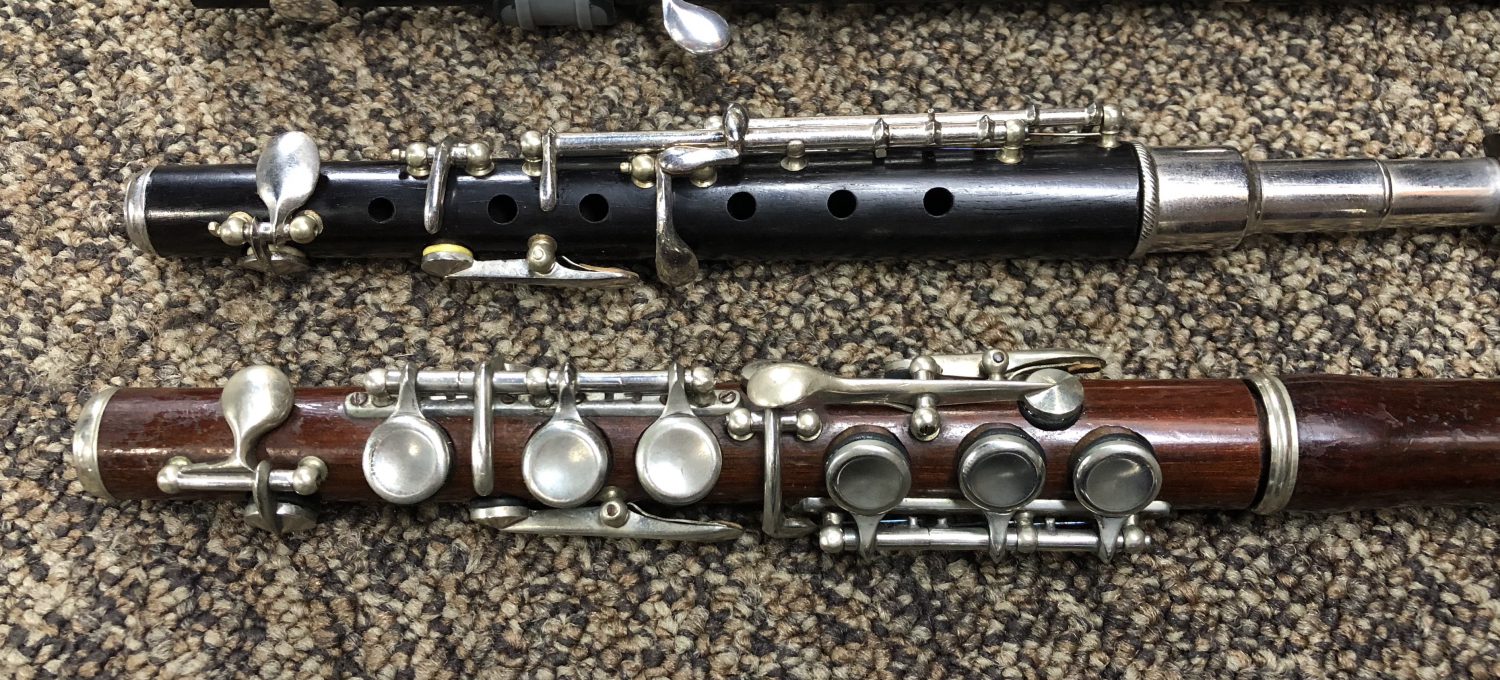The history of the flute can be traced back to 43,000 year old bones from a mute swan found in Geissenklösterle cave, in Germany. It is suggested that these first flutes were used in religious rituals and recreation as well as social networking. The flute’s smaller sibling, the piccolo, has a history that is a bit more clouded. It was the smallest member of a Renaissance consort of transverse flutes and continued to be used as an octave instrument above the larger instrument. The early piccolo found its place in the orchestral works of Rameau as well as other composers who used its high, piercing voice to represent storms and angry gods. Much of this history is conjecture among scholars and has required research to be compiled to formulate a viable timeline. In reality, the history of the piccolo as we all know it today (aside from those of us who have some historical performance interest) stems from the undisputed father of the flute, Theobald Böehm.
Theobald Böehm (1794-1881) is known for developing the key system used on the modern flute. His schema, or schematic, shows the proportional tone-hole size and placement based on mathematical computations. His work has been used and recalculated by most every modern flute manufacturer. What many don’t know is that Böehm also applied his keywork design to the piccolo and manufactured a few piccolos. He had a strong interest in a cylindrical body style but these were not favored by players as much as the conical body design. While I am glossing over a ton of specific details, my apologies to my research colleagues, it is simply to get to some interesting and maybe more important history that might be of greater interest to the general population of piccolo players.
Böehm is known to be the father of the modern flute (and piccolo) but he was also a businessman and a teacher. Maybe the more interesting history is who worked with and was trained by Böehm. Mechanical development aside, it is the training that he provided to his employees and apprentices that really marks the world of the piccolo, and that information has fallen to the wayside. Böehm had several iterations of his company through the years, and Böehm and Mendler (1862-1888) is where his work with the piccolo really took place. Carl Mendler (1833-1914) was his business partner and the father of Karl Mendler (1862-1920). Both Carl and his son Karl were known flute and piccolo makers. Among others who trained in the Böehm and Mendler shop were Johann Voigt (1867-1908), James Wilkins, Jr. (d. 1909), Ernst Robert Leibl (1871-1920). One of the many apprentices that worked with Böehm was Emil Rittershausen (1852-1927), whose lineage is the focus of this particular article.
Rittershausen established his own shop around 1876 and he is known for his flutes and piccolos (I personally own two of his instruments). Many of his instruments were imported and sold under the stencil of Carl Fischer, a large importer of professional instruments and music around the turn of the century. The Rittershausen shop continued to produce flutes and piccolos after Emil’s death, but it is the instruments that were made under his watchful eye that are true gems and highly sought after. Rittershausen also claimed to have invented the split-E mechanism during his work with flutist Emil Prill (1867-1940), but this claim has been disputed. Rittershausen was a highly respected maker and teacher, just like his own former teacher. It is in the apprenticeships that the lineage of Böehm and Rittershausen continues to blossom.
One of Rittershausen’s apprentices was Arthur (Anton) Gemeinhardt (d. 1930), father of Kurt Gemeinhardt (1908-1974), founder of Gemeinhardt flutes and piccolos. Another apprentice was Phillip Hammig (1888-1967), recognizable as the maker of the well-known Hammig piccolos played by so many orchestral players around the world. Both of these students came from families with a long succession of instrument makers, but they trained in flute and piccolo making with Rittershausen. While these men most certainly had many other influences on their instrument building techniques and implemented their own designs and ideas into their individual lines of piccolos, their work was directly influenced by the teachings of Böehm and Rittershausen.
I personally love knowing that the piccolos played by so many today are only just slightly removed from such profound developments in music history and instrument manufacturing. I also feel very lucky to own two instruments that were made in Rittershausen’s shop during his lifetime that are still playable. I am reminded of this lineage each and every time that I play those instrument in a performance and I am honored to hold such a profound piece of history in my hands.


I have a Emil Rittershausen Piccolo but not sure of its age